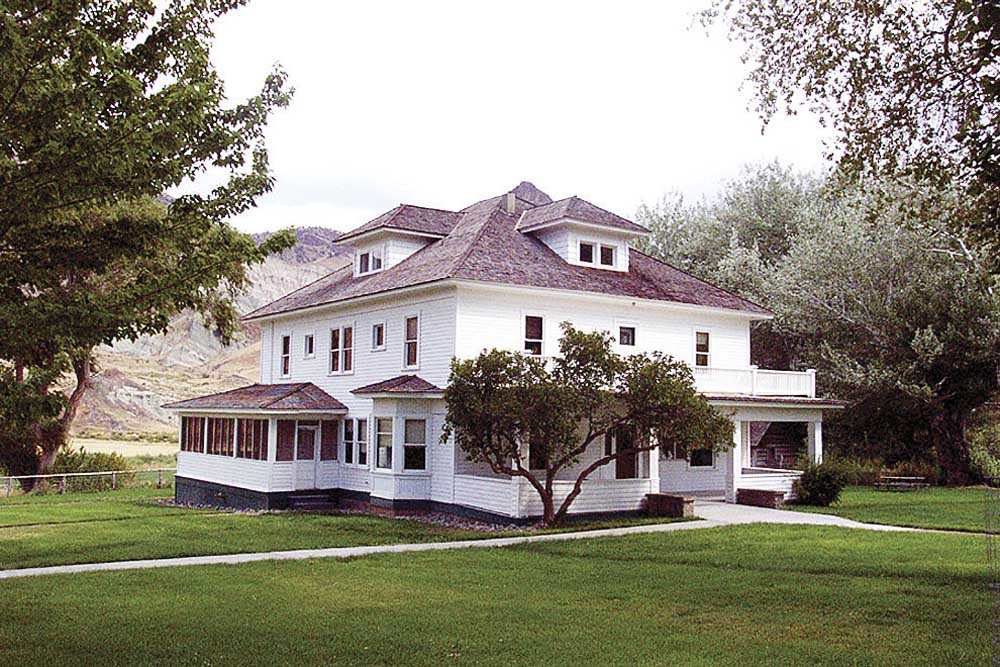Journey: Cant Ranch shows pride of early ranching
Published 5:00 pm Tuesday, July 24, 2012

- <p>The James Cant Ranch House</p>
DAYVILLE Stop into the James Cant Ranch House, and step into Eastern Oregons history.
Tours of the ranch house and several surrounding buildings offer a glimpse into the workings of an influential, early 20th-century livestock ranch.
James and Elizabeth Cant brought their roots in sheep ranching with them from Scotland.
The livestock was used to provide area mining towns at that time, with fresh meat.
Cant came to the John Day country in 1905.
After a few years sheep herding for the Murray family, he was able to send for Elizabeth, who had remained in Scotland.
The Cants were married Oct. 10, 1908, in Canyon City.
In 1910, Cant and partner, James Mason, purchased the ranch originally homesteaded by Floyd Officer.
By 1916, with four children, plans for a larger home were ordered through the mail. Built with lumber milled near the town of Mitchell, an expansive 2 1/2-story house with six bedrooms and a bathroom on the second floor was completed in 1917.
A popular overnight stop for travelers, it was due to the reputation of the Cants for great hospitality.
It was not uncommon for the Cants to serve dinner for 20 or more.
The third floor is a single open room that the Cant family used as a school room and as a gathering place for large social events.
Often the family had overnight guests after hosting social events. Midnight suppers were popular, and neighbors remember them often lasting until dawn.
School was held in the third floor attic until the nearby Cant School was built in 1919, and the schoolteacher lived with the Cants as a family member.
The Cant School continued to be the areas educational center until the road through Picture Gorge was completed in the mid-1920s, after which the children traveled to Dayville, 8 miles southeast.
In addition to a vegetable garden, the family provided for their own needs, growing fruit, and raising hogs and chickens. Near the John Day River, they grew wheat, alfalfa and other crops, irrigated with ditches made when the Officers owned the land.
The Cant family continued their sheep operation through the Great Depression. During World War II, it began to recover, however, the shortage of labor made raising sheep increasingly difficult.
The family transitioned from sheep to cattle production in 1946. Over the next three decades the Cants cattle operation grew and prospered. By 1965, the Cant ranch covered 6,500 acres plus an additional 4,500 acres leased from the Bureau of Land Management. At that time the ranch was sending 500 to 600 cattle to market each year.
James Cant, Jr., and his wife Freda helped James and Elizabeth run the ranch until the elderly Cants died in the early 1970s.
The National Park Service bought the ranch from the Cant family in 1975, and incorporated the property into the John Day Fossil Beds National Monument.
The agency used the ranch house as the monuments headquarters, visitor center, museum and office until the Thomas Condon Paleontology Center, across the highway, was built in 2003. The main house and several of the buildings in the ranch complex are open to the public.
The James Cant Ranch is listed on the National Register of Historic Places.
The facility is open in the summer seven days a week, 9 a.m.-5 p.m. In winter, its from 10 a.m.-4 p.m. weekdays, and weekends by appointment.
From Dayville, travel west 9 miles on Highway 26, turn north on Highway 19 and travel for two more miles. Cant Ranch is on the east side of the highway.
For more information, John Day Fossil Beds National Monument can be reached at 541-987-2333.



